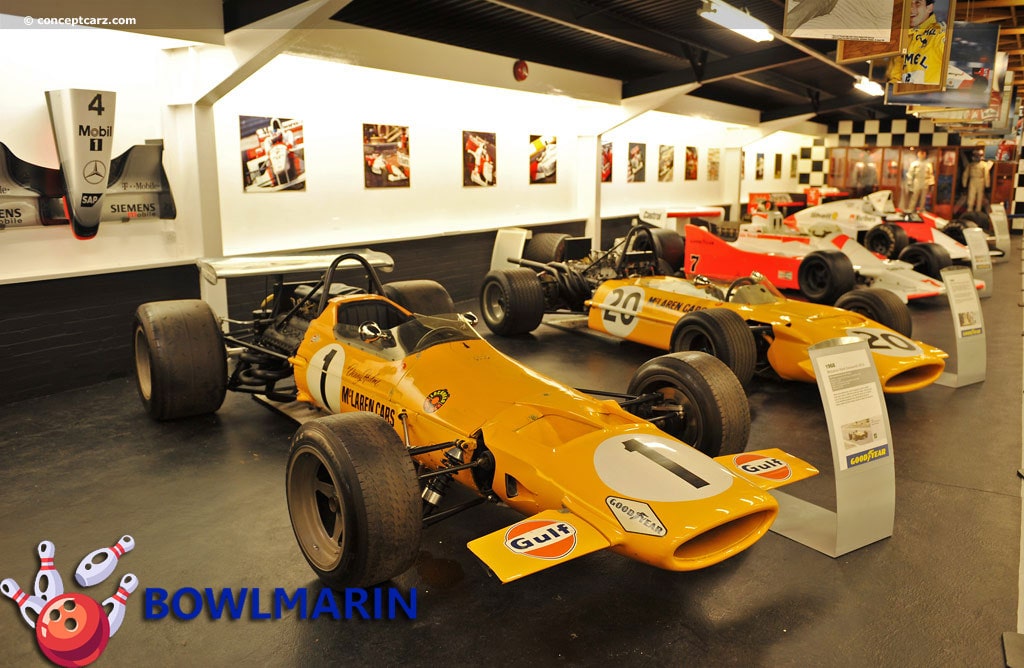Perkenalan
McLaren is a name that resonates with automotive enthusiasts and racing fans around the world. Known for its cutting-edge technology, relentless pursuit of performance, and a rich heritage in Formula One racing, McLaren Automotive has cemented its place as one of the most iconic and respected manufacturers of high-performance sports and supercars.
The Birth of McLaren (The History of McLaren)
The McLaren journey began in the 1960s when Bruce McLaren, a New Zealand racing driver and engineer, decided to create his own racing team. In 1963, he founded Bruce McLaren Motor Racing Ltd., laying the foundation for what would eventually become McLaren Automotive.
The First McLaren Formula One Victory (The History of McLaren)
McLaren’s foray into Formula One proved successful sooner than expected. In 1968, the team achieved its first Formula One victory at the Belgian Grand Prix. This marked the beginning of McLaren’s illustrious career in motorsports.
McLaren’s Dominance in the ’80s (The History of McLaren)
The 1980s were a golden era for McLaren in Formula One. Under the leadership of Ron Dennis, McLaren became a dominant force, winning multiple Drivers’ and Constructors’ Championships. The partnership with Honda in the late ’80s resulted in a period of unmatched success, with drivers like Ayrton Senna and Alain Prost bringing home numerous victories.
The Birth of McLaren Automotive
While McLaren was enjoying success on the racetrack, the idea of creating road-legal sports cars had been brewing. In 1992, McLaren unveiled the McLaren F1, a groundbreaking supercar that redefined automotive performance. The F1 featured a central driving position, a carbon fiber chassis, and a naturally aspirated V12 engine, making it one of the fastest production cars of its time.
The McLaren F1’s Legacy (The History of McLaren)
The McLaren F1’s impact on the automotive world cannot be overstated. It set the benchmark for supercars and held the title of the world’s fastest production car for several years, with a top speed of 240 mph. Its innovative design and engineering made it a collector’s dream, and it remains one of the most sought-after and valuable supercars ever built.
McLaren’s Return to Formula One
After a period of relative decline in the ’90s and early 2000s, McLaren returned to the forefront of Formula One racing in the mid-2000s. The team’s partnership with Mercedes-Benz resulted in a string of competitive seasons and memorable victories. Drivers like Lewis Hamilton and Fernando Alonso brought McLaren back into championship contention.
The McLaren MP4-12C: A New Chapter
In 2010, McLaren Automotive, the road car division of the company, made a significant comeback with the introduction of the McLaren MP4-12C. This marked the beginning of a new chapter for McLaren as a manufacturer of high-performance sports cars for the road. The MP4-12C showcased McLaren’s commitment to innovation, performance, and engineering excellence.
Expansion and Success
The MP4-12C was followed by a range of impressive models, including the McLaren 650S, the McLaren P1 (a hybrid hypercar), and the McLaren 570S. These cars were praised for their cutting-edge technology, aerodynamic design, and exhilarating performance. McLaren’s expansion into the supercar market was met with critical acclaim and commercial success.
The McLaren Senna: A Tribute to a Legend
In 2018, McLaren unveiled the McLaren Senna, a hypercar named after the legendary Formula One driver Ayrton Senna.
The Future of McLaren
As McLaren Automotive continues to push the boundaries of automotive technology and performance, the future looks promising.
McLaren in Motorsports Today
While McLaren’s Formula One team has faced its share of challenges in recent years, it remains a competitive force in the sport.
Conclusion
The history of McLaren is a testament to innovation, dedication, and a relentless pursuit of excellence.
